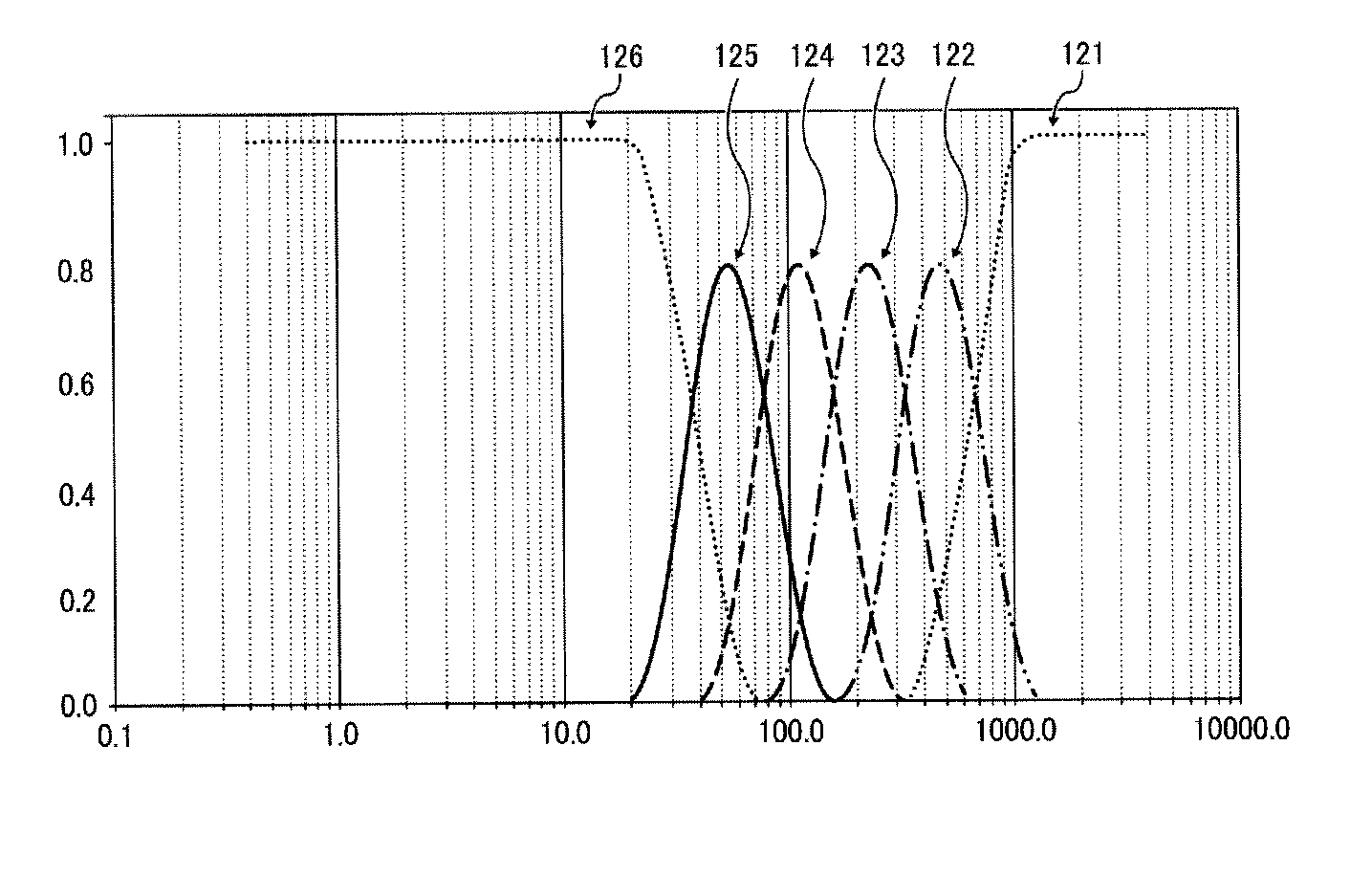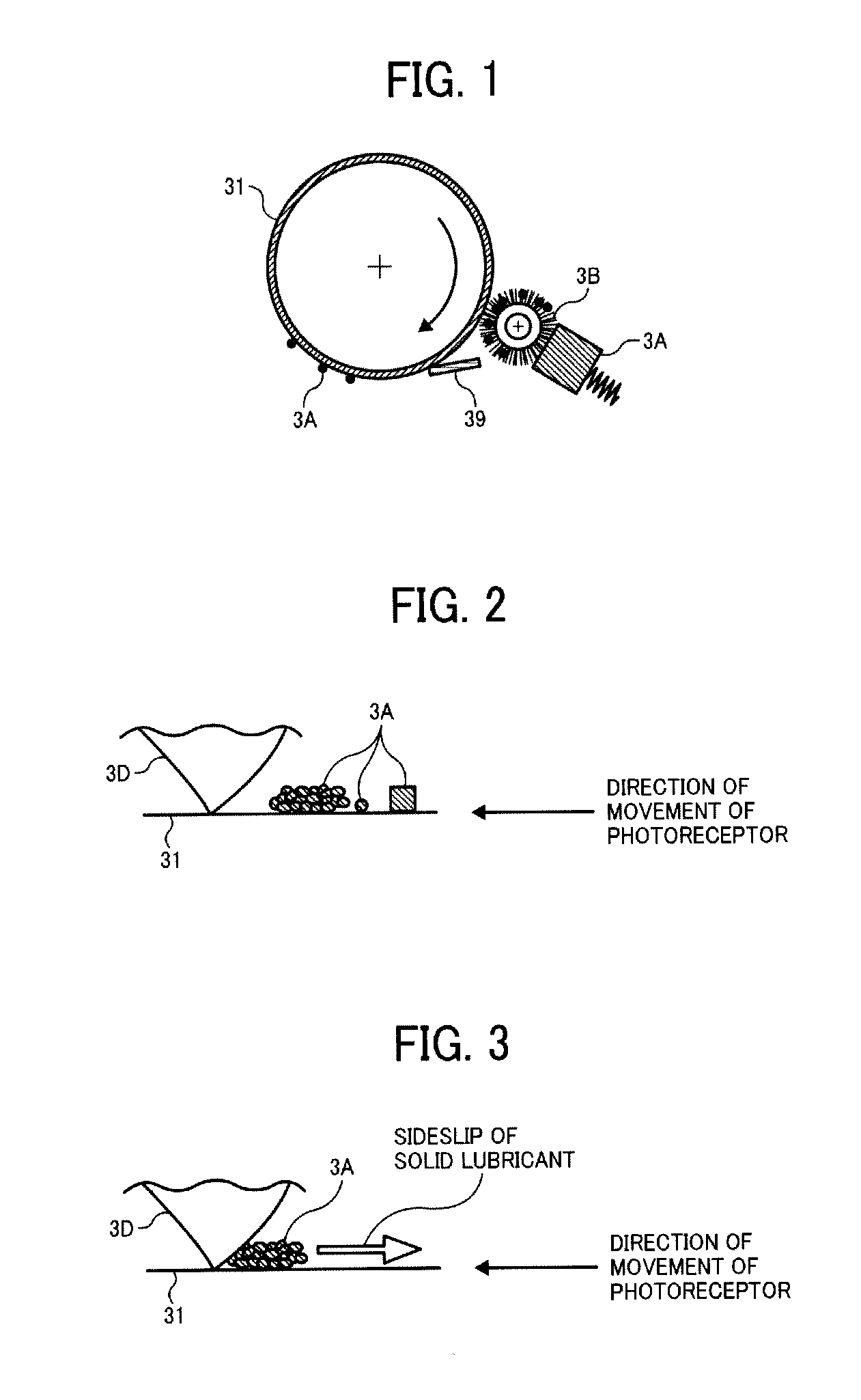Electrophotographic photoreceptor, method of manufacturing electrophotographic photoreceptor, image forming apparatus, and process cartridge
a photoreceptor and electrophotography technology, applied in the field of electrophotographic photoreceptors, can solve the problems of unsatisfactory application of solid lubricants to photoreceptor surfaces, difficult removal of polymerization toner particles, and insufficient application of external additives, etc., to achieve good receptivity and good receptivity
- Summary
- Abstract
- Description
- Claims
- Application Information
AI Technical Summary
Benefits of technology
Problems solved by technology
Method used
Image
Examples
example 1
[0286]On each of an aluminum cylinder having a thickness of 0.8 mm, a length of 340 mm, and an outer diameter of 40 mm, and another aluminum cylinder having a thickness of 0.8 mm, a length of 340 mm, and an outer diameter of 30 mm, a undercoat layer coating liquid, a charge generation layer coating liquid, and a charge transport layer coating liquid are sequentially coated and dried in this order. Thus, an undercoat layer, a charge generation layer, and a charge transport layer having a thickness of 3.5 μm, 0.2 μm, and 24 μm, respectively, are formed on each of the aluminum cylinders.
[0287]Further, a cross-linked resin surface layer coating liquid is spray-coated on the aluminum cylinders having the undercoat layer, the charge generation layer, and the charge transport layer thereon, followed by drying for 10 minutes. The aluminum cylinders are put 120 mm away from a UV curing lamp so that the cross-linked resin surface layer coating liquid is subjected to UV curing while rotating. ...
example 2
[0293]The procedure in Example 1 is repeated except for changing the amount of the cross-Linkable silicone oil material to 0.75 parts.
example 3
[0294]The procedure in Example 1 is repeated except for changing the amount of the non-cross-linkable silicone oil material to 0.45 parts.
PUM
| Property | Measurement | Unit |
|---|---|---|
| length | aaaaa | aaaaa |
| surface roughness | aaaaa | aaaaa |
| length | aaaaa | aaaaa |
Abstract
Description
Claims
Application Information
 Login to View More
Login to View More - R&D
- Intellectual Property
- Life Sciences
- Materials
- Tech Scout
- Unparalleled Data Quality
- Higher Quality Content
- 60% Fewer Hallucinations
Browse by: Latest US Patents, China's latest patents, Technical Efficacy Thesaurus, Application Domain, Technology Topic, Popular Technical Reports.
© 2025 PatSnap. All rights reserved.Legal|Privacy policy|Modern Slavery Act Transparency Statement|Sitemap|About US| Contact US: help@patsnap.com



